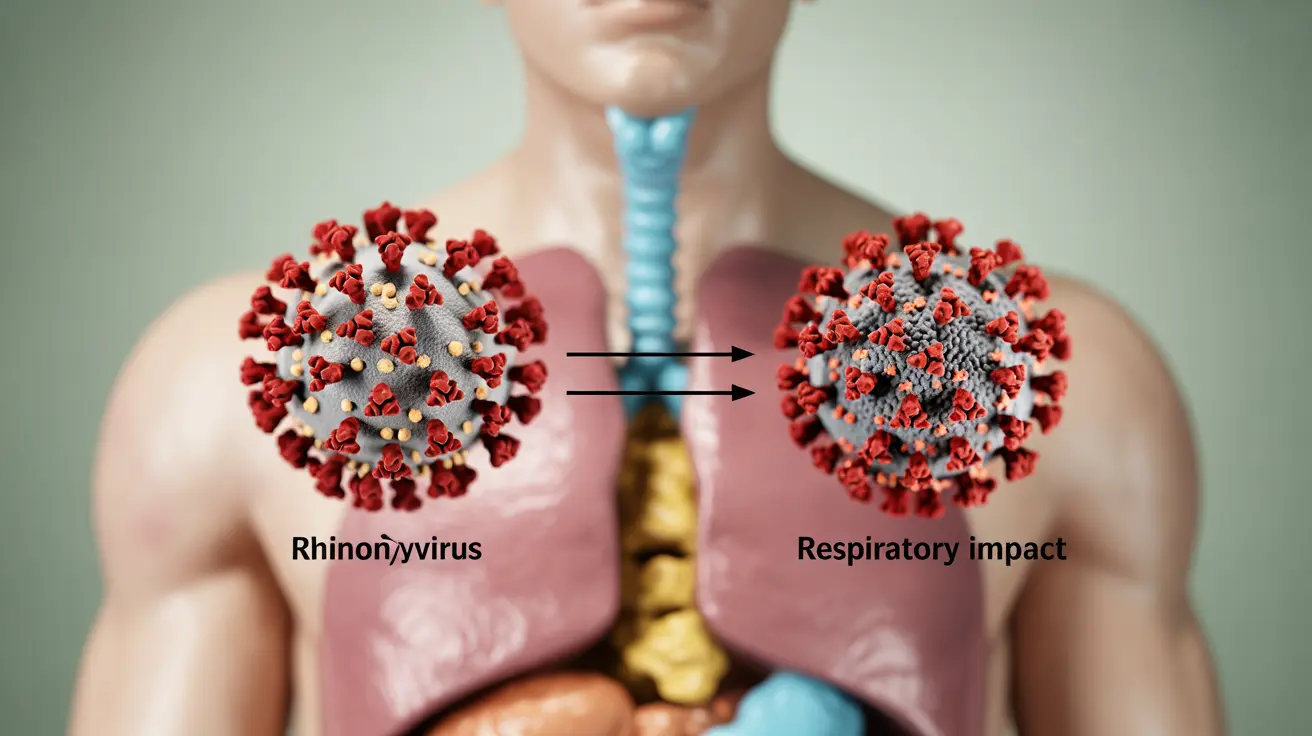When it comes to the common cold, not all viral infections are created equal. Two of the most prevalent culprits behind those uncomfortable sniffles and coughs are rhinovirus and adenovirus. While both can cause what we generally call a "cold," understanding their differences is crucial for proper management and prevention.
These distinct viral families can trigger varying symptoms and potentially lead to different complications. Let's explore how these viruses compare, what symptoms they cause, and the best ways to protect yourself from infection.
Key Characteristics of Rhinovirus and Adenovirus
Rhinoviruses are the most common cause of the common cold, responsible for up to 50% of all cases. These viruses thrive in cooler temperatures, particularly in the nasal passages. Adenoviruses, on the other hand, can cause a broader range of illnesses and tend to be more resilient in various environmental conditions.
Rhinoviruses typically focus their impact on the upper respiratory tract, while adenoviruses can affect multiple body systems, including the respiratory tract, eyes, and gastrointestinal system.
Distinctive Symptoms and Progression
Rhinovirus Symptoms
Rhinovirus infections typically present with:
- Runny or stuffy nose
- Sore throat
- Mild cough
- Slight fatigue
- Low-grade fever (less common)
- Symptoms usually peak within 2-3 days
Adenovirus Symptoms
Adenovirus infections often cause:
- Higher fever
- More severe sore throat
- Pink eye (conjunctivitis)
- Gastrointestinal issues
- Bronchitis-like symptoms
- Symptoms may last longer and be more severe
Potential Complications and Risk Factors
While rhinovirus infections usually remain mild and self-limiting, adenovirus can potentially cause more serious complications, especially in certain populations. People with weakened immune systems, young children, and elderly individuals should be particularly vigilant when infected with either virus.
Treatment Approaches and Duration
Both types of viral infections primarily require supportive care rather than specific medical treatments. However, the approach may differ based on symptoms and severity. Most rhinovirus infections resolve within 7-10 days, while adenovirus infections might persist longer, sometimes up to two weeks.
Prevention and Transmission Control
Both viruses spread through similar mechanisms, primarily through:
- Respiratory droplets
- Close personal contact
- Touching contaminated surfaces
- Eye contact (particularly with adenovirus)
Effective prevention strategies include regular hand washing, avoiding touching your face, and maintaining good overall hygiene practices. In shared spaces, proper ventilation can help reduce transmission risk.
Frequently Asked Questions
What are the main differences between rhinovirus and adenovirus in causing colds? Rhinovirus primarily affects the upper respiratory tract and causes milder symptoms, while adenovirus can affect multiple body systems and often causes more severe symptoms, including conjunctivitis and gastrointestinal issues.
How do the symptoms of a rhinovirus cold compare to those caused by adenovirus? Rhinovirus typically causes milder symptoms like runny nose and slight fatigue, while adenovirus often produces more severe symptoms including higher fevers, significant sore throat, and possible eye infections.
Can adenovirus infections lead to more serious health complications than rhinovirus? Yes, adenovirus infections generally have a higher potential for serious complications, especially in immunocompromised individuals, and can affect multiple organ systems beyond the respiratory tract.
How are rhinovirus and adenovirus colds treated and how long do they usually last? Both require primarily supportive care. Rhinovirus infections typically last 7-10 days, while adenovirus infections may persist for up to two weeks. Treatment focuses on symptom relief rather than targeting the virus directly.
How contagious are rhinovirus and adenovirus, and what are the best ways to prevent spreading them? Both viruses are highly contagious through respiratory droplets and surface contact. Prevention includes frequent hand washing, avoiding face touching, maintaining good hygiene, and staying home when sick to prevent transmission to others.




